Growing tropical fruit trees at home can be both exciting and challenging. Among these, the starfruit tree, also known as carambola, stands out for its uniquely shaped fruit, glossy leaves, and beautiful golden harvests. However, like many container-grown fruit trees, starfruit requires the right pot, soil, and care to truly thrive.
Inspired by the YouTube video “Starfruit (Carambola) Update and Discussing Those Terrible Tree Pots,” this blog post explores the journey of nurturing a starfruit tree from pot to perfection. We’ll talk about how starfruit grows, the challenges faced with unsuitable pots, how to fix root and container issues, and practical tips to ensure a healthy, fruit-bearing tree—all while sharing the lessons learned along the way.
Understanding the Starfruit Tree
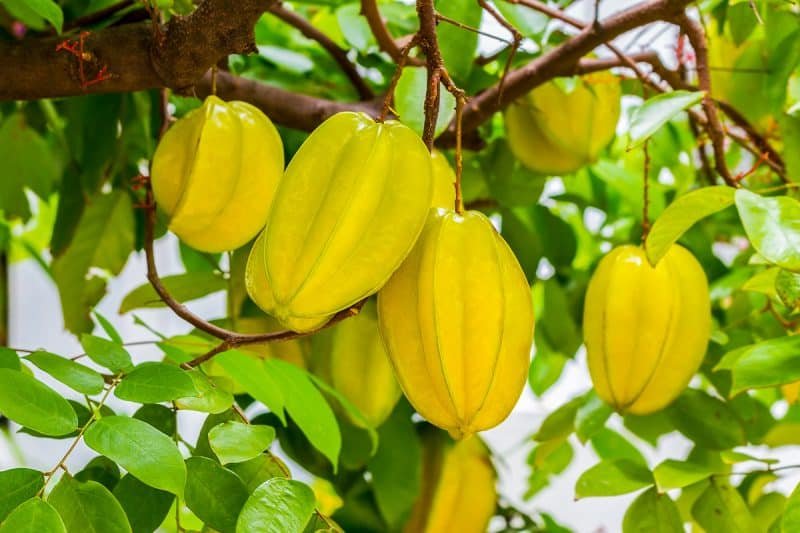
The carambola (Averrhoa carambola) is a small, tropical tree native to Southeast Asia, now grown worldwide in warm climates. It produces the iconic star-shaped fruit with a sweet-tart flavor.
Here’s why gardeners love growing starfruit:
- Compact Size: Perfect for container gardening or small backyards.
- Attractive Appearance: Glossy green leaves and golden-yellow fruit make it a showstopper.
- High Yield: Once mature, it produces fruit multiple times a year.
- Versatile Use: The fruit can be eaten fresh, juiced, or added to salads and desserts.
However, while the tree is easy to love, growing it successfully—especially in containers—comes with challenges. One major issue many gardeners overlook is the quality of the pot itself.
Starfruit Tree Growth Update
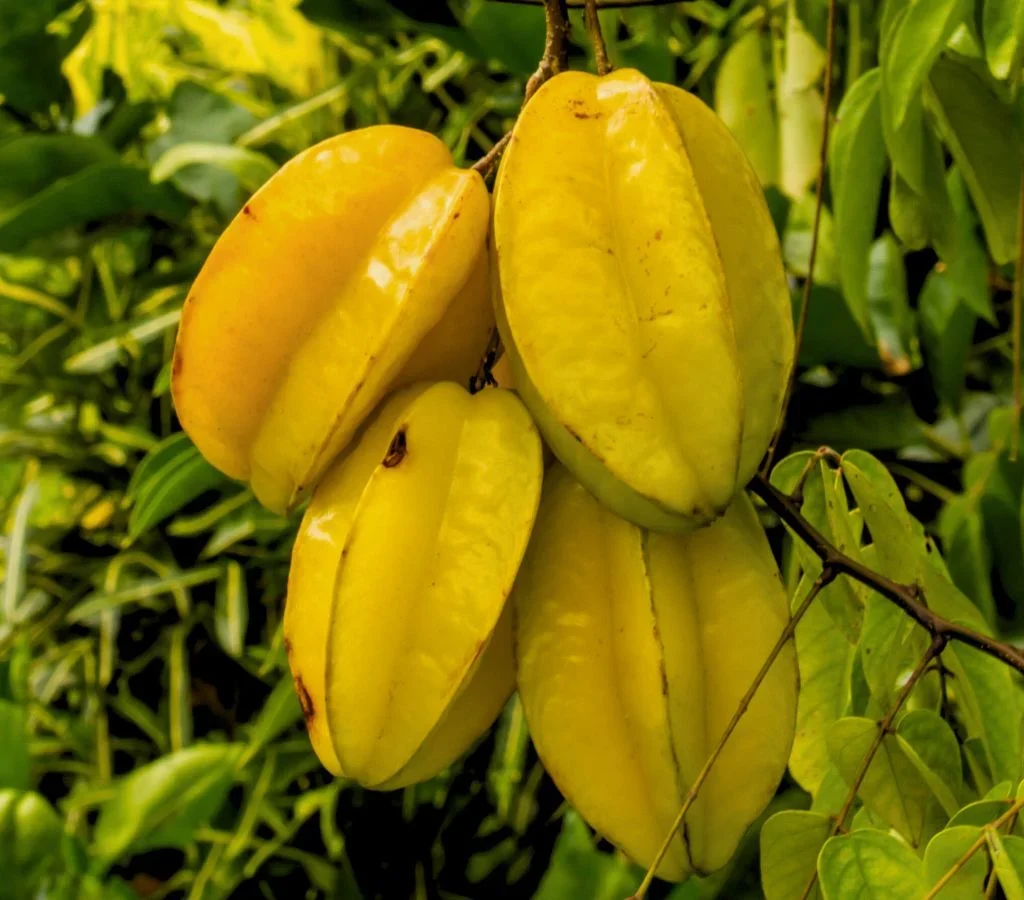
Let’s start with a quick look at the starfruit’s growth journey. When grown from seed or as a young grafted plant, the carambola tree grows rapidly under the right conditions.
Early Growth Stage (Months 1–6):
- The plant establishes roots quickly.
- New shoots and glossy leaves appear.
- Regular watering and bright sunlight help the tree develop a strong trunk.
Intermediate Stage (6–18 Months):
- The tree starts forming a bushy shape.
- Pruning helps shape the canopy and control size.
- With proper feeding, it may even flower within 1–2 years.
Fruit-Bearing Stage (2–3 Years):
- The starfruit tree starts producing small clusters of pink-lavender flowers.
- Pollinated flowers develop into small green fruit that ripen to yellow.
At this stage, everything seems perfect—until you notice slow growth, yellowing leaves, or droopy branches. Often, the problem isn’t the plant or soil, but the pot itself.
The Problem with “Terrible Tree Pots”
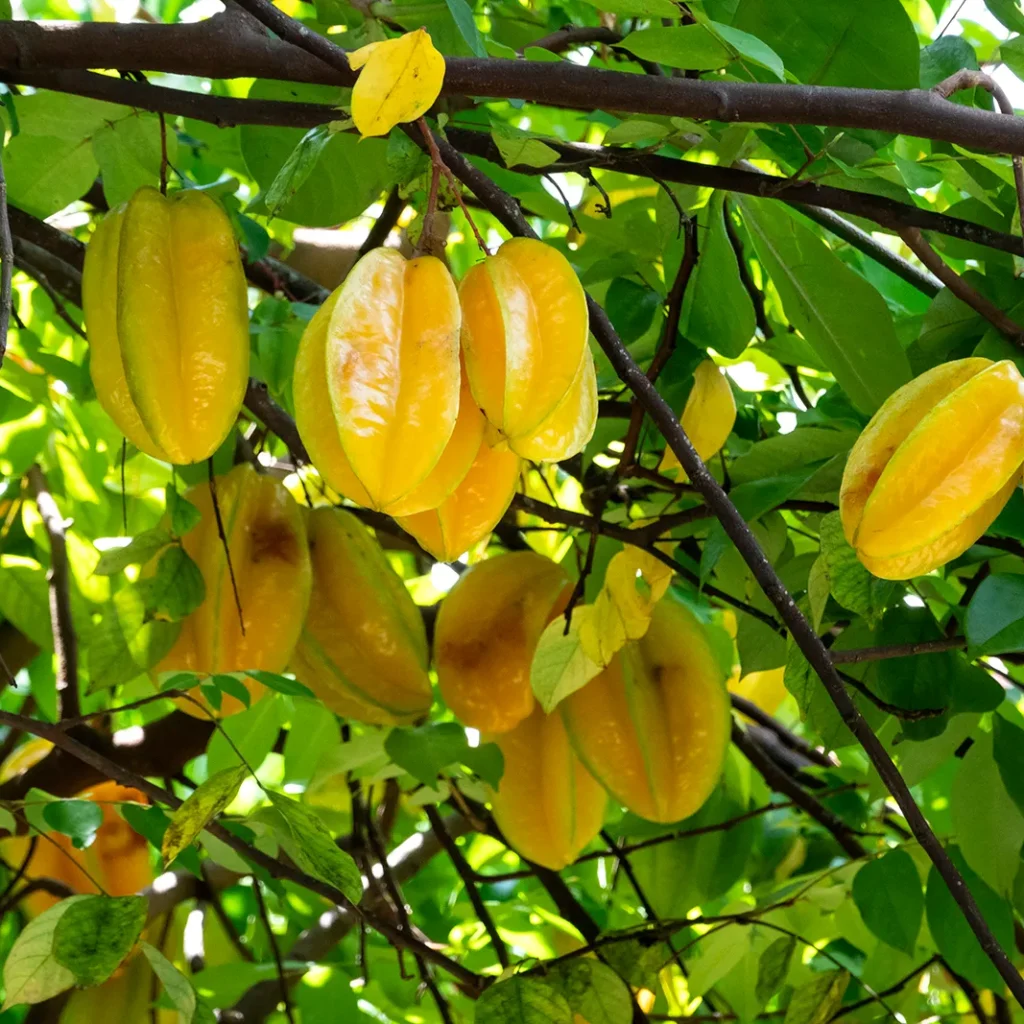
In the video, the gardener points out a common and serious issue—poor-quality tree pots that hinder healthy growth. While these pots may look fine on the outside, they can create multiple hidden problems that eventually harm the plant.
Let’s discuss what makes a tree pot “terrible.”
1. Poor Drainage
The biggest problem is insufficient drainage holes. Starfruit roots are sensitive to waterlogging, and trapped moisture can cause root rot, stunted growth, and leaf drop.
2. Thin Plastic and Heat Stress
Cheap plastic pots tend to heat up quickly under sunlight. This bakes the roots, especially in tropical climates, leading to root burn and poor nutrient absorption.
3. Root Circling and Compaction
Narrow-bottomed or small pots cause roots to circle around the edges instead of spreading naturally. Over time, this leads to root-bound plants, where roots suffocate and stop absorbing water efficiently.
4. Structural Weakness
Thin or brittle pots often crack over time. Once broken, water and soil leak out, and the plant becomes unstable.
5. Lack of Air Pruning
Regular plastic pots don’t allow for air pruning—a process that naturally trims roots as they reach the container edges, promoting healthy branching roots.
These problems may not appear immediately, but over months, they lead to poor growth and weak trees.
Signs Your Starfruit Tree Is Suffering from a Bad Pot
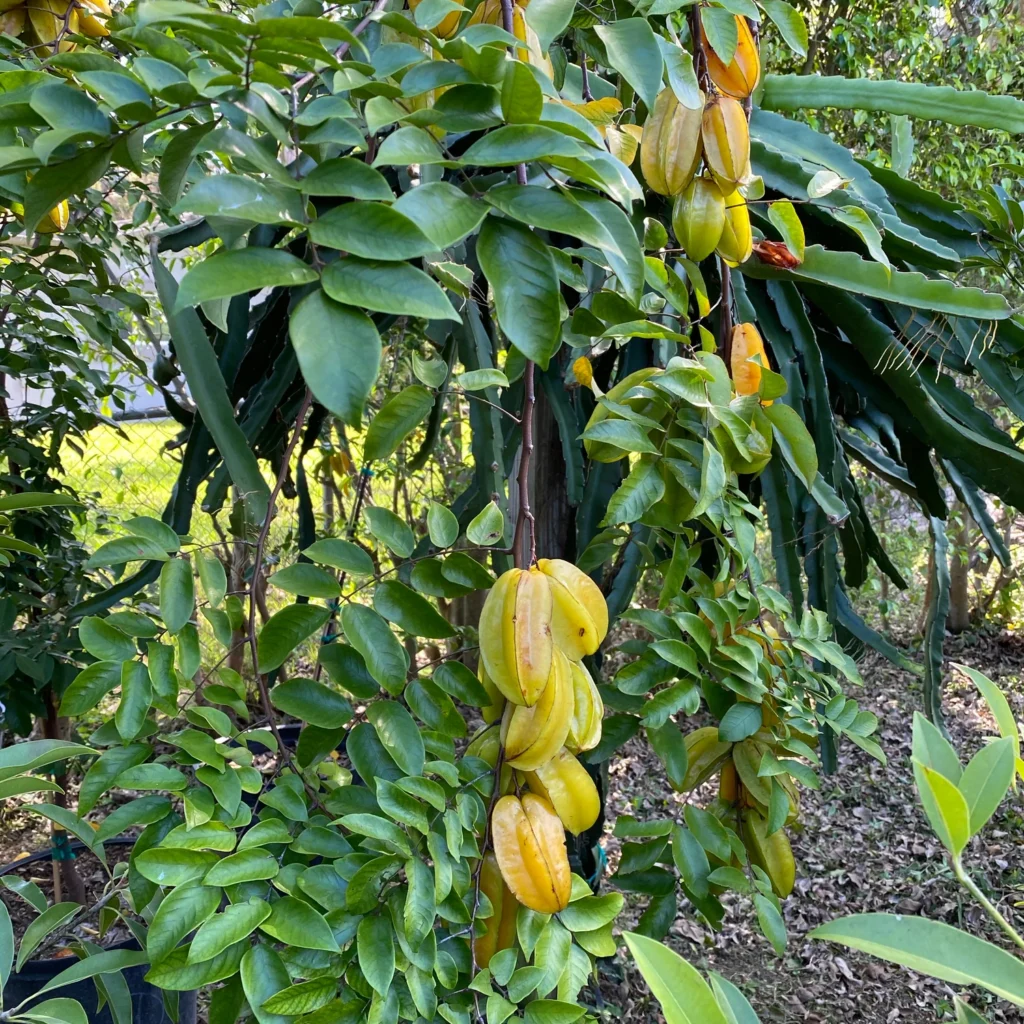
If your carambola tree isn’t thriving, look for these warning signs:
- Yellowing or wilting leaves
- Stunted growth despite good fertilizer use
- Soil staying wet for too long
- Mold or algae on the soil surface
- Visible roots circling at the pot’s edges
- Pot feels excessively hot under sunlight
If you notice any of these symptoms, it’s time to repot your starfruit tree into a healthier environment.
Choosing the Right Pot for Starfruit Trees
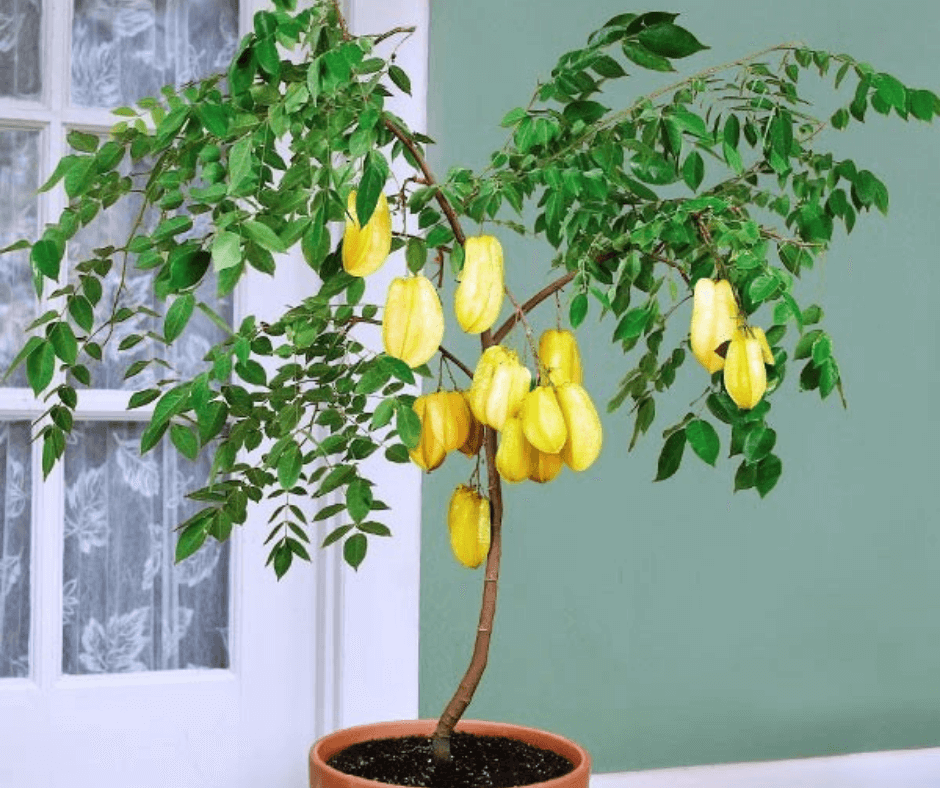
To ensure your starfruit tree grows strong and fruitful, you need to pick the right container. Here’s what to consider:
1. Material
- Fabric Grow Bags: Excellent for air pruning and root health.
- Clay or Terracotta Pots: Allow natural airflow but may dry faster—great for humid regions.
- Thick Plastic or Resin Pots: Durable and lightweight, suitable for long-term outdoor use.
Avoid thin plastic nursery pots for long-term growth.
2. Size
For young trees, start with a 12–15-inch (30–40 cm) pot. As the plant grows, upgrade to a 20–25-inch (50–65 cm) pot to give roots ample space.
3. Drainage
Ensure your pot has multiple holes at the base and sides. You can even elevate the pot slightly to improve drainage.
4. Color and Insulation
Darker pots absorb more heat. If you live in a hot climate, choose light-colored pots or wrap the sides with reflective material to protect the roots from overheating.
Repotting and Saving a Starfruit Tree from a Bad Pot
If you discover your starfruit is trapped in one of those “terrible pots,” don’t panic. You can fix it with a careful repotting process.
Step-by-Step Repotting Guide
- Water Beforehand: Water the tree lightly a day before repotting to loosen the soil.
- Remove the Tree Carefully: Hold the base of the trunk and gently pull out the root ball. If it’s stuck, tap the pot’s sides.
- Trim Root Circles: Inspect the roots and trim any that are tangled or circling.
- Prepare New Pot: Fill the bottom with a few inches of gravel or coarse sand for drainage.
- Add Potting Mix: Use a well-draining mix of:
- 40% garden soil
- 30% compost
- 20% sand or perlite
- 10% coco peat
- Plant and Fill: Position the tree at the same depth as before and fill around the sides with soil mix.
- Water Deeply: Water until excess moisture drains from the bottom holes.
- Add Mulch: Cover the surface with dry leaves or coconut husk to retain moisture.
After repotting, keep the tree in partial shade for a week before moving it back into full sunlight.
Caring for Starfruit After Repotting
Your tree will need some extra love after transitioning into its new pot:
- Watering: Keep the soil evenly moist, not soggy.
- Fertilizer: Wait two weeks before feeding with organic fertilizer or compost.
- Sunlight: Provide 6–8 hours of bright light daily.
- Pest Watch: Look out for aphids or mealybugs—common after repotting stress.
- Pruning: Lightly prune damaged leaves or stems to encourage new growth.
Within a few weeks, you’ll notice greener leaves and fresh new shoots—a sign your starfruit tree is recovering well.
Preventing Pot Problems in the Future
Learning from experience is key. To avoid future pot disasters:
- Upgrade pots as the tree grows. Don’t keep starfruit trees root-bound.
- Regularly check drainage holes. Clean them if they get clogged.
- Monitor root health. Repot every 2–3 years.
- Avoid placing pots directly on concrete. Elevate slightly for better air circulation.
- Use mulch or ground cover. This prevents heat stress and soil compaction.
The Reward: Healthy Growth and Sweet Harvests
Once you’ve fixed the pot issue and maintained proper care, your starfruit tree will reward you with lush growth and continuous flowering.
A healthy carambola tree can produce fruit two or three times a year, depending on your climate. The fruits are ready when they turn bright yellow with a slight green tinge. They’re crunchy, juicy, and perfect for snacking or juicing.
By addressing pot problems early, you ensure years of fruitful growth and a beautiful, healthy tree that thrives in your garden or balcony.
Conclusion
The journey of growing a starfruit (carambola) tree teaches us patience, observation, and the importance of the right environment. As seen in “Starfruit (Carambola) Update and Discussing Those Terrible Tree Pots,” sometimes it’s not the plant that’s the problem—it’s what we grow it in.
A bad pot can silently restrict your tree’s potential, while the right one can unleash vibrant growth and abundant harvests. By understanding your plant’s needs, repotting wisely, and giving it the proper care, you can turn even a struggling carambola into a thriving, fruit-laden beauty.
So if your starfruit tree seems unhappy, take a closer look at its roots—literally and figuratively. With the right pot and care, you’ll soon enjoy not just a healthy tree, but also the delightful golden stars it produces year after year.
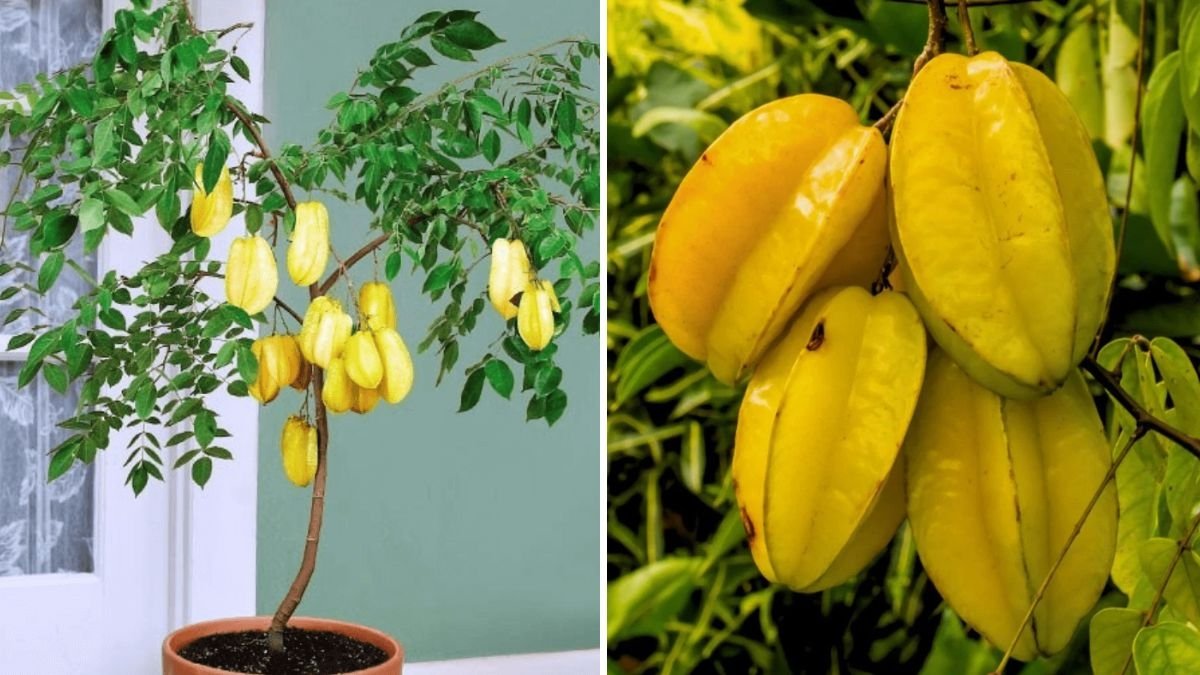





Leave A Comment